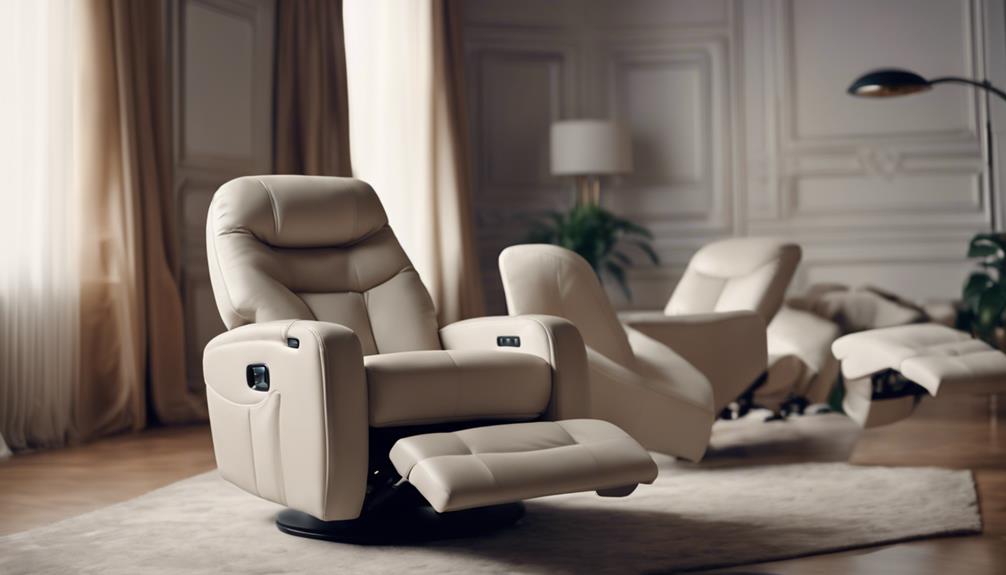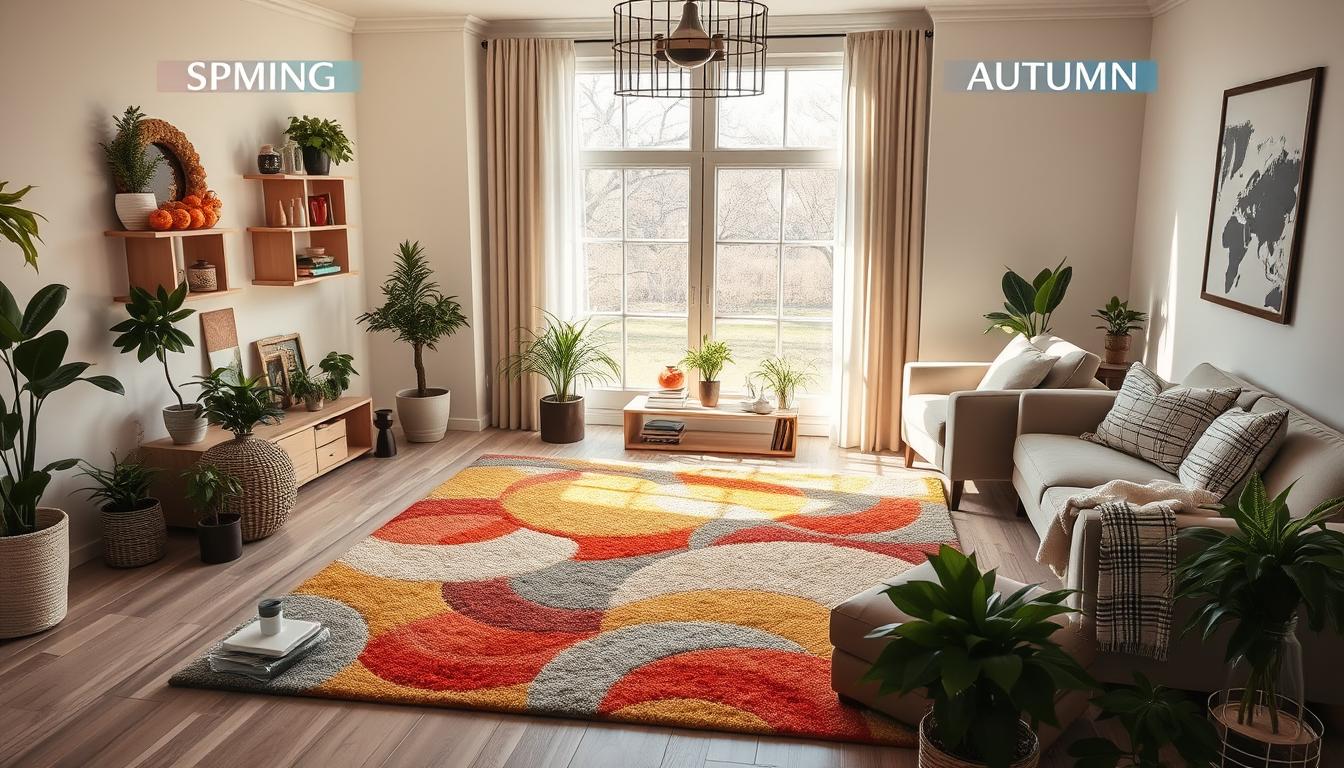Mixing and matching home textiles can totally transform your space and showcase your personality. Start by blending different scales—use large patterns on rugs, medium ones on curtains, and small prints on pillows. Layer textures like plush throws with sleek fabrics for depth. Stick to a cohesive color palette and remember to balance prints and solids for harmony. If you’re enthusiastic for more creative tips to elevate your textile game, there’s plenty more to explore!
Key Takeaways
- Start with a balanced color palette using shades from the same family to create a cohesive look in your textiles.
- Mix different scales of patterns—small, medium, and large—to add visual interest and depth to your space.
- Incorporate a variety of textures, such as cotton, velvet, and knit, to enhance comfort and style in your home.
- Use solid colors as anchors to unify mixed prints and ensure at least 50% of the room features these solid elements.
- Regularly refresh your space by rotating textiles, such as throw pillows, to keep the atmosphere dynamic and inviting.
Understanding the Basics of Pattern Mixing
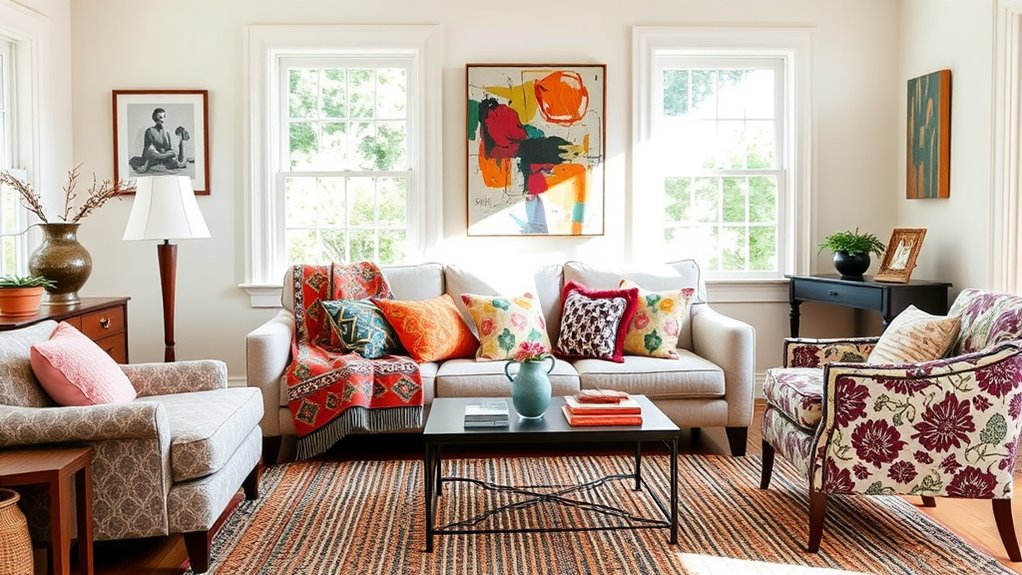
When you immerse yourself in pattern mixing, it’s essential to grasp the three print scales: small, medium, and large. A successful design incorporates all three, creating a balanced look in your home textiles. Incorporating farmhouse kitchen textiles can add charm and elegance to your overall decor. Additionally, the use of natural elements in your textiles can enhance the tranquility of your space. To further complement your textiles, consider using vintage or distressed furniture that aligns with the farmhouse aesthetic. For instance, you might find inspiration in Builder Mikes Bright Tiny House, where innovative design maximizes space while maintaining aesthetic appeal.
Mixing patterns effectively means choosing a variety of print types, like florals, geometrics, and stripes, to avoid visual conflict. Incorporating a solid color can serve as a visual bridge, offering a plain element for your eye to rest and enhancing cohesion. For beginners, starting with three distinct prints is ideal, while the more experienced can confidently mix up to five. Additionally, using varying tints and shades of a single color across your patterns adds depth and complexity, elevating the overall appeal of your pattern and texture choices. Choosing neutral color palettes can further enhance your design coherence while maintaining an inviting atmosphere.
Starting Small: Easy Ways to Experiment
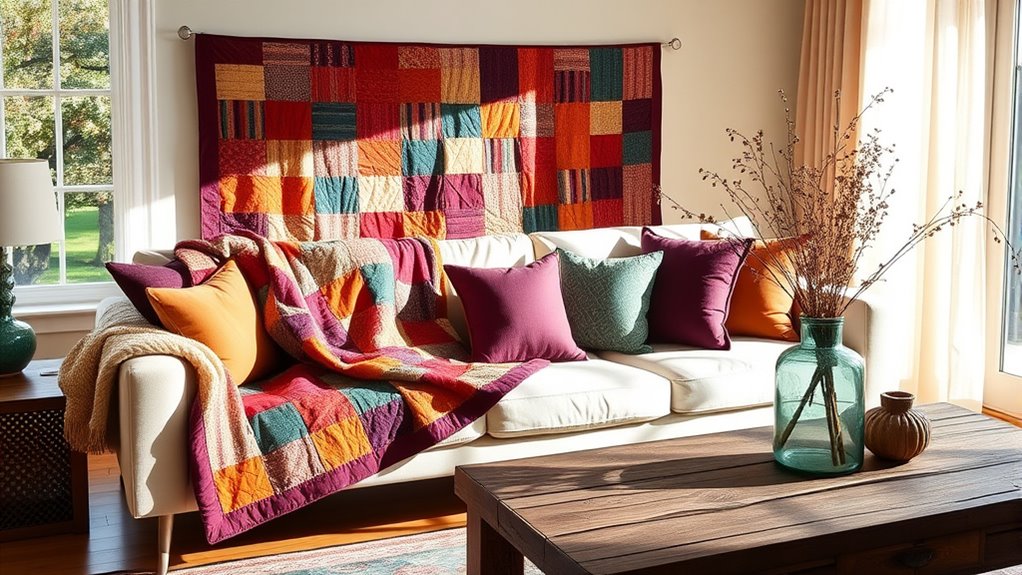
If you’re looking to dip your toes into the world of home textile styling, starting small can make the process both enjoyable and manageable.
Begin by incorporating throw pillows as they’re an easy way to introduce new patterns and textures. Here are some simple ideas to get you started:
- Mix textured throw pillows on your sofa or bed.
- Swap out a single cushion to refresh your space.
- Combine a delicate floral with a bold striped pattern.
- Style your shelves with a 70% full, 30% empty balance.
- Experiment with various patterns to find what resonates with you. Additionally, utilizing a cohesive color palette can help create a harmonious look throughout your home. Crochet styles for locs can also be used to inspire unique textile patterns and designs. Remember to regularly trim cat’s nails to prevent damage to your textiles when incorporating soft furnishings into your home. To enhance your textile choices even further, consider cozy textiles like blankets and throws that can add warmth and comfort to your space.
These small changes can lead to significant visual impacts, helping you gain confidence in mixing textiles before moving on to larger furnishings. Additionally, consider how seasonal arrangements can further enhance your textile choices, providing a cohesive look throughout your home.
Choosing the Right Scale for Your Patterns
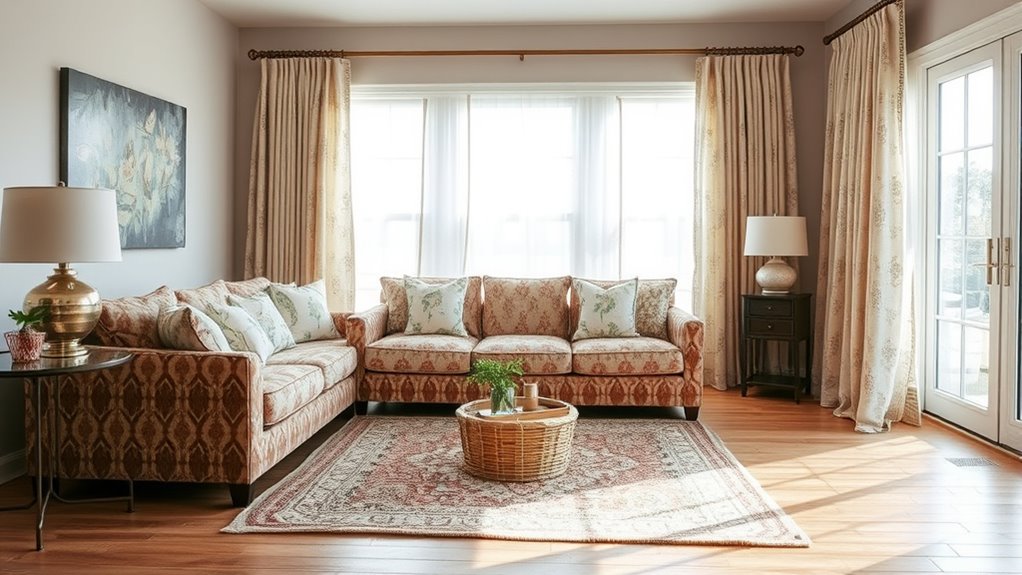
Choosing the right scale for your patterns can dramatically transform your space. Patterns can be classified into small, medium, and large scales, each serving a unique purpose in home decor.
Large-scale patterns are perfect for wide surfaces like wallpaper or oversized rugs, delivering a bold visual impact. Medium-scale patterns shine on drapery and smaller furniture, complementing larger designs harmoniously. Small-scale patterns work wonders for upholstery and smaller accessories, adding texture without overwhelming your space.
To create visual cohesion, incorporate a solid color as an anchor between various patterns; this allows your eye to rest amidst the complexity. By thoughtfully selecting scales, you can achieve a balanced and inviting atmosphere that showcases your personal style.
Layering Textures for Depth and Interest

Layering textures is a fantastic way to create depth and interest in your space.
By mixing different fabric types and incorporating varied materials, you can harmonize colors and patterns that enhance your decor.
Think about how a chunky knit throw can complement a sleek velvet chair, adding both comfort and style to your room.
Textured Layering Techniques
While you might think of texture as just a visual element, it can greatly enhance the ambiance of your space.
Layering textures is all about mixing and matching different materials to create depth and interest. Start with a textured rug as your base, then add contrasting curtains and soft furnishings like cushions.
Here are some ideas to contemplate:
- Pair a chunky knit throw with sleek silk cushions
- Use woven baskets for natural materials storage
- Combine velvet and linen for a cozy mix
- Layer faux fur throws over cotton blankets
- Incorporate macramé wall hangings for added dimension
Remember to observe how these textures interact with natural light throughout the day to guarantee a harmonious atmosphere in your home.
Harmonizing Colors and Patterns
To create a cohesive and inviting space, you’ll want to harmonize colors and patterns in your textiles thoughtfully.
Start by selecting a consistent color palette with varying tints and shades that adds depth without overwhelming the room. Use large-scale patterns on significant surfaces like walls or area rugs, while mixing patterns on smaller furnishings like cushions and throws for balance.
Introduce a solid color as an anchor to provide a visual resting place, enhancing cohesion. Don’t shy away from contrasting textures—pair a sleek velvet cushion with a woven jute rug to add dimension and tactile interest.
Finally, observe how colors and textures interact with natural light, as this can shift perceptions and inspire your choices.
Guidelines for Mixing Different Print Types

Mixing different print types can transform your space, creating a vibrant atmosphere filled with personality.
To attain harmony in your interior design while mixing patterns, keep these guidelines in mind:
- Start with three prints if you’re a beginner; experienced designers can mix up to five.
- Choose prints like botanicals, geometrics, and stripes that share the same color family.
- Guarantee at least 50% of your living space features solid colors, especially on large elements like sofas or rugs.
- Use various scales in patterns to add visual interest without overwhelming the room.
- Aim for cohesive prints that complement rather than conflict, enhancing the overall appeal of your design.
This approach will elevate your living space’s aesthetic while maintaining balance.
Color Variation: Enhancing Your Palette
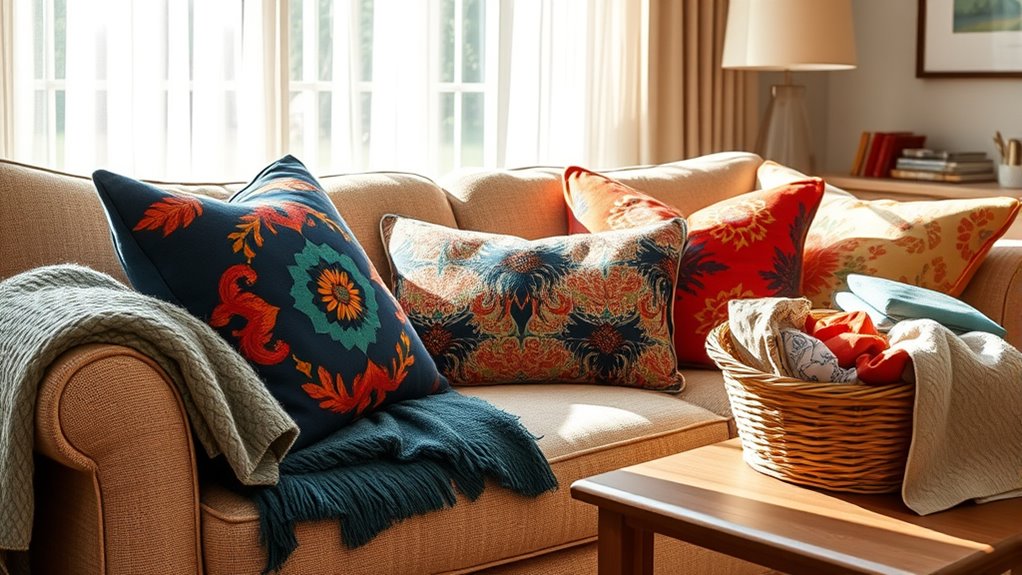
Creating a harmonious design with mixed prints sets the stage for exploring color variation, which can further enhance your palette. By incorporating varying tints and shades of a single color family—like deep indigo, navy, and faded blue-gray—you add depth and visual interest. A solid color acts as an anchor for mixed patterns, creating balance and allowing your eye to rest.
| Color Family | Patterns | Solid Fabrics |
|---|---|---|
| Deep Indigo | Floral | Light Gray |
| Navy | Geometric | White |
| Faded Blue-Gray | Striped | Dark Blue |
| Light Blue | Abstract | Soft Beige |
| Teal | Nature | Charcoal |
Aim for at least 50% of the room with solid fabrics to maintain cohesion while showcasing beautiful patterns.
Personalizing Your Space With Unique Textiles

While unique textiles can transform a room, they also tell a story that reflects your personality and experiences. Incorporating these elements creates a space that feels genuinely yours.
Here are some creative ways to personalize your home with textiles:
- Use handmade rugs or artisan-crafted throws to showcase local craftsmanship.
- Mix fabric types, like soft cotton cushions with luxurious silk, for depth.
- Incorporate sentimental textiles, such as inherited quilts or travel souvenirs, to evoke memories.
- Layer various colors and patterns while keeping a cohesive palette for visual interest.
- Regularly rotate textiles, like seasonal throw pillows, to keep your space fresh and reflective of your evolving style.
These thoughtful touches will showcase your unique personality and enrich your home’s atmosphere.
Final Tips for Successful Textile Styling
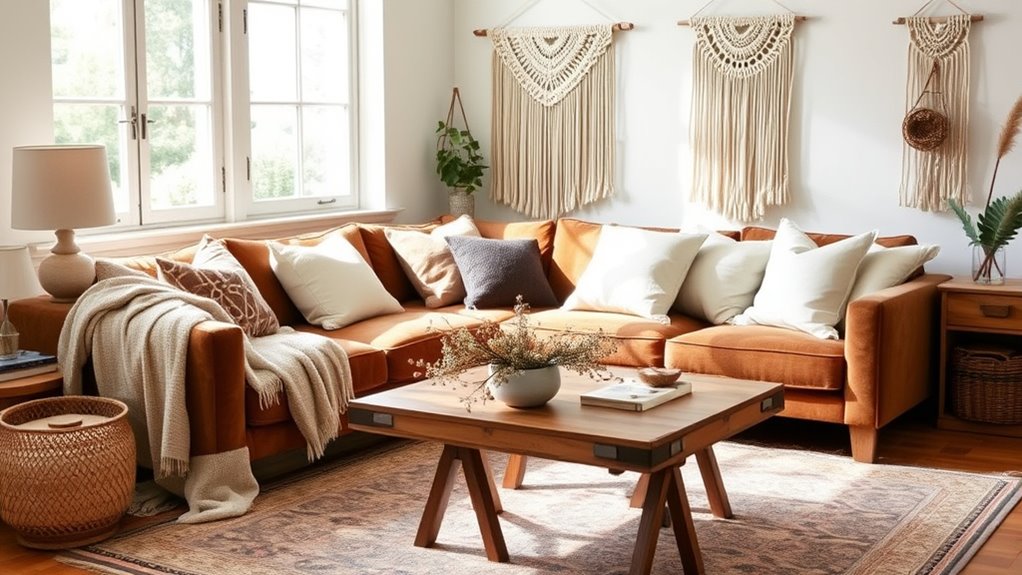
To create a stunning and inviting space, embrace a mix of colors and textures.
Layering different materials not only adds visual interest but also enhances the overall comfort of your home.
Embrace Color and Texture
When you embrace a variety of colors and textures, your home textiles can transform into a dynamic and inviting space.
Start by considering a balanced color palette that mixes shades and tints from the same color family. Incorporate different textures like cotton, linen, and silk to add depth.
Here are some tips to enhance your textile styling:
- Use solid colors as anchors to unify mixed patterns.
- Combine a textured throw with patterned cushions for visual interest.
- Test fabric swatches in your space to see how natural light affects colors.
- Guarantee at least 50% of your room features solid elements for harmony.
- Play with the interplay of textures to create a cozy atmosphere.
Layer for Visual Interest
Layering textiles is key to creating a visually engaging and inviting space in your home. Combine materials like cotton, linen, and silk to add depth, comfort, and style.
Mix patterned and solid textiles—think throw pillows, blankets, and area rugs—to define spaces while keeping at least 50% of the room solid for balance. Incorporate textures, such as a plush velvet throw over a woven cotton sofa, to create warmth and a tactile experience that invites interaction.
Pay attention to pattern scale; blending small, medium, and large prints fosters harmony and prevents clutter.
Finally, test fabric swatches in your space to see how colors and textures interact with natural light, ensuring your layered look remains visually interesting all day.
Frequently Asked Questions
Can I Mix Patterns From Different Cultures?
Absolutely, you can mix patterns from different cultures! It adds a unique flair to your space and showcases your personality.
Just pay attention to color palettes and scale; balance bold patterns with subtler ones to create harmony.
Don’t be afraid to experiment—layer textiles, like throws and cushions, to find combinations that resonate with you.
Trust your instincts, and remember, the best designs come from your personal touch and creativity!
How Do I Maintain a Cohesive Look With Mixed Textiles?
To maintain a cohesive look with mixed textiles, start by choosing a unifying color palette.
You can weave in colors that appear across different patterns, creating a seamless flow.
Don’t shy away from varying textures, either! Layering fabrics like linen with cotton adds depth.
Use a consistent style, like bohemian or modern, to guide your choices.
Finally, balance bold pieces with subtle ones, so your space feels harmonious and inviting rather than chaotic.
What Are the Best Fabrics for Layering?
When you’re layering fabrics, consider using lightweight materials like linen or cotton as your base.
They’re breathable and won’t add bulk. Then, incorporate textures like velvet or wool for warmth and depth.
Silk can add a touch of elegance and shine, while denim provides durability.
Mix patterns and colors thoughtfully to create visual interest, but keep the overall palette cohesive.
Layering these fabrics thoughtfully can transform your space into a cozy retreat.
Is It Okay to Mix Vintage and Modern Textiles?
Absolutely, it’s okay to mix vintage and modern textiles!
This combination can create a unique and dynamic aesthetic in your space. You’ll find that vintage pieces often add character and history, while modern textiles can bring a fresh, contemporary touch.
Just guarantee you balance colors and patterns, so they complement each other.
Experimenting with different textures will help you achieve a cohesive look that reflects your personal style beautifully.
How Often Should I Refresh My Textile Arrangements?
You should refresh your textile arrangements every season or whenever you feel your space needs a change. This keeps your home feeling fresh and inviting.
If you notice wear and tear or your tastes evolve, it’s a good idea to switch things up. Try experimenting with color combinations or textures to create a new vibe.
Don’t hesitate to rearrange, layer, or even replace items to maintain a cozy, stylish environment.
Conclusion
Incorporating various textiles into your home can transform your space into a vibrant reflection of your personality. Did you know that 87% of interior designers agree that mixing patterns adds a unique charm to a room? By blending different prints, scales, and textures, you can create a cozy, inviting atmosphere that feels both personal and stylish. So, don’t be afraid to experiment—your home deserves a touch of creativity that showcases your individuality!



